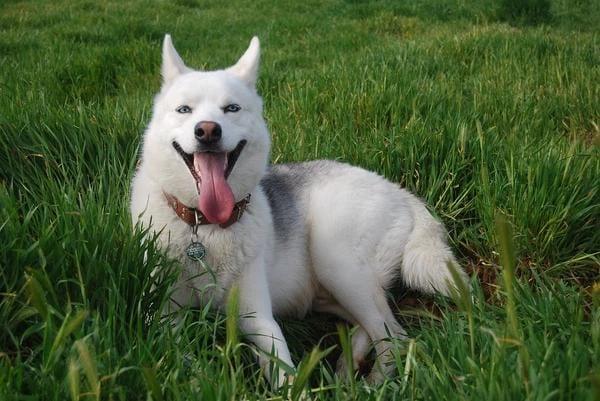Having a dog means taking responsibility for their health and wellbeing, which includes their grooming. Of course, you may employ the services of professionals, and for some things, that may be preferred. But there are some care duties that can be a bonding time for you and your pet, much like your self-care is a demonstration of your love for yourself. One such care task is trimming your dog's nails.
Related: Do Dogs Cry? What Do Dogs’ Tears Mean
Why Trim Your Dog's Nails
If your dogs weren't domesticated, their nails would be kept trim naturally by running and digging in the wild. But your pet is domesticated, so this duty is now yours. Trimming your dog's nails is a major part of their grooming. If their nails are left to grow long, they can become a danger to your dog and anyone around them. Being scratched isn't pleasant, but worse than that, long nails can cause issues for your dog's feet.
As the long nails make contact with the ground, they can split and break in ways that are painful for your dog, even causing conditions that can lead to arthritis. Long nails can also cause their toes to spread, making it hard for them to stand or walk around. This is uncomfortable for the dog and eventually leads to deformation. In cases of neglect, a dog's nails can even grow to the point of curling or twisting, which can then become embedded in their paws.
When to Trim Your Dog's Nails
If you don't have a regular date to clip your dog's nails, you can know when it's time when you hear that familiar clicking sound when your dog walks and their nails tap the floor. They may also get their nails snagged in the carpet or rugs on the floor.
Preparing Your Dog for the Session
Now that you know it's time to trim your dog's nails, take a few minutes to prepare them. The following are a few tips to ensure the session goes well for both you and your dog.
- Make sure your dog is okay with you touching their feet. Regularly handling their feet will ensure they aren't overly sensitive or ticklish.
- Give your dog a treat whenever you touch their feet when not trimming their nails.
- Start when they're young and touch their feet daily and then twice per day.
- You'll know when your dog is ready for you to start trimming their nails when they allow you to hold their toes without flinching or reacting.
- Once they allow you to hold their toes in your hands, you can trim just one toe per day. Obviously, this isn't the most efficient way, but it will ease your dog into the process - and you too. If you need help, get a friend to hold your dog while you clip.
- While you trim their nails, consider giving them a treat to distract them.
Related: Top Reasons Why Your Dog is Scratching and Biting Himself
How Often Should You Trim Your Dog's Nails
How often you need to trim your dog's nails depends on how fast your particular dog's nails grow. Another factor is the environment where your dog is active. If there is a lot of concrete or pavement, their nails will wear down gradually and naturally. So you may not have to trim as often as someone whose dogs regularly run on grass or sand. But keep in mind that while running on hard surfaces has many benefits, it is also tough on their paw pads and can cause blistering. Additionally, constant activity on that terrain may cause inflamed joints, and their nails can wear down too much.
The shape of your dog's foot and age are also determinants of how often you need to trim their nails. Dogs with round feet wear down their own nails more quickly, and younger dogs need more frequent trims than do older dogs.
But if you're looking for a rule of thumb for nail trimming, consider the following:
- Most adult dogs who are accustomed to nail trims can be trimmed monthly.
- Young puppies may need to be trimmed weekly - to keep up with growth and get them used to the trimming process.
- Active city or suburban dogs may require less frequent trims because their nails are worn down naturally.
- Country dogs need more frequent trims because, although they may be quite active, grass and dirt don't wear down their nails effectively.
- If your dog's nails were left to grow excessively long, their quicks (the nerves and blood vessels that supply the nail) would also grow long. So you will have to trim their nails to a healthy length with weekly trims to avoid clipping those nerves.
Whatever your dog's age, activity level, and initial nail condition, set the regular date for their nail trimmings in your diary. You won't forget, and you'll be at ease and more prepared each time.
Are you concerned about giving your dog the best treats and care? Check out the CBD product line at Dope Dog today!

Trimming Your Dog's Nails: What to Keep in Mind
If you choose to do your dog's nails yourself, know this:
Proper Length of Dog's Nails
Your dog's nails should not protrude past their paw pads when they stand. Their nails should not touch the floor.
Beware The Quick
As mentioned earlier, the quick is a part of your dog's toes, under the nails that consists of the nerves and blood vessels that nourish the nails. When your dog's nails are clear, you can easily see the quick, to avoid it when trimming.
If you can see through the nail, the recommendation is to cut about 2 mm away from the quick.
But when your dog's nails are dark-colored or black, it is more difficult to know where the quick lies. You can try one of these methods for increasing visibility so you can safely trim:
- Look at the underside of the nail to see where the quick is before making a series of minor cuts toward getting the nail to its proper length.
- Shine a light from the underside of the nail towards yourself.
- Baby oil applied to the nail or a bath can make the quick easier to see.
If none of these work, or you'd rather not take any chances with clipping, you can file their nails down instead or allow a professional to do the clipping.
Related: How Much Should My Dog Weigh? Weight Loss Guidelines for Dogs
Final Thoughts
If, despite your best efforts, your dog is still afraid or overly sensitive to your efforts to trim their nails, take them to the vet or find a reputable dog groomer.
Are you looking for high-quality treats for your dog? Check out the irresistibly delicious treats at Dope Dog today!


















